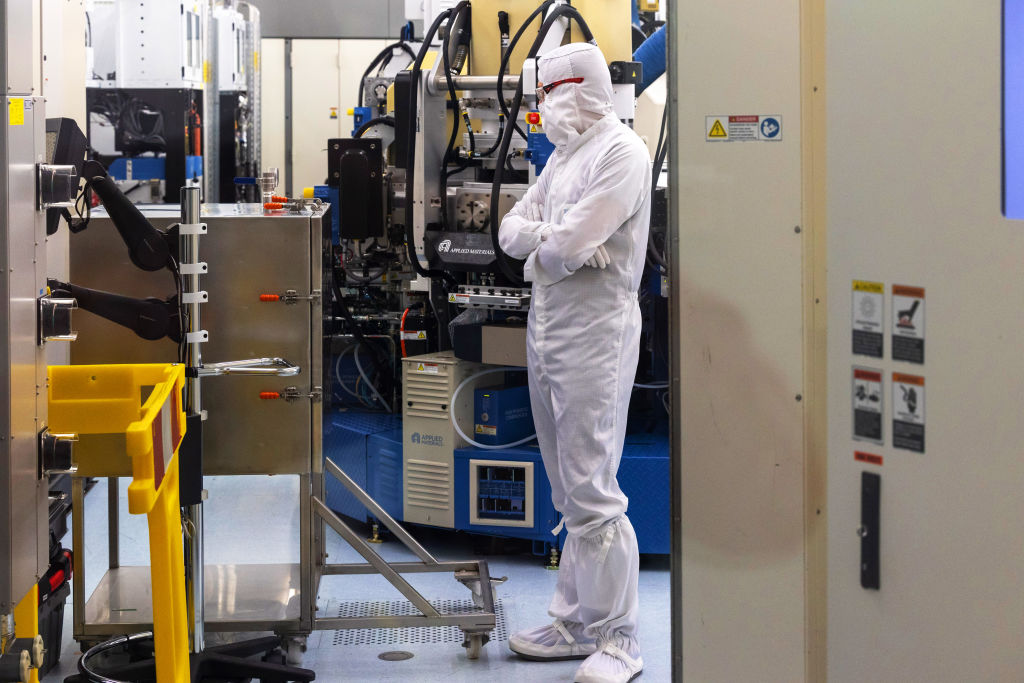Elliot Silverberg & Eleanor Hughes
Semiconductors are foundational to the digital revolution. A global chip shortage – accentuated by U.S.-China tensions, Covid-19, extreme weather events, as well as industry consolidation over the last decade – has galvanized attention around supply chain security. But alongside multilateral efforts to close bottlenecks in the semiconductor supply chain, cooperation will be needed to mitigate other systemic constraints on the industry’s growth.
Chief among these constraints is a shortage of qualified semiconductor engineers in the United States and partner nations.
In a 2017 survey of U.S. semiconductor manufacturers, 77 per cent of respondents were convinced that a talent deficit existed within the industry. Another 14 per cent anticipated a critical deficit by 2020.
Japanese companies, which import nearly two-thirds of their chips from South Korea and Taiwan, are struggling to fill jobs requiring expertise in artificial intelligence, quantum computing, and other cutting-edge technologies used in advanced chip design. In response, Tokyo plans to spend a trillion yen on its industry.
The Taiwanese government and local chip manufacturers, led by TSMC, the world’s leading chip fabricator, are investing hundreds of millions in the industry’s feeder universities.
Others are throwing money at the problem as well. South Korea is injecting billions into its semiconductor manufacturers, part of a national effort to reduce its exposure to geopolitical tensions. Keen on establishing digital sovereignty, the European Union is also subsidising regional chip makers.
But simply spending more money won’t close the talent gap, at least not initially. The capacity crunch will take time to unblock.

A technician in a semiconductor cleanroom at the Interuniversity Microelectronics Centre in Leuven, Belgium (Olivier Matthys/Bloomberg via Getty Images)
Although the industry provides opportunities across a spectrum of education and skill levels – one in five semiconductor workers have not attended university – shortages are most acute at the high-skill end of the manufacturing process. To fill these jobs requiring years of specialised training, governments will therefore need to take steps beyond educating, training, and upskilling their workforces – all longer-term remedies.
Indeed, China has struggled to fill hundreds of thousands of semiconductor engineering jobs despite an ambitious investment strategy in effect since 2014. Beijing reportedly still needs 400,000 more semiconductor employees to meet its stated targets.
Similarly, in the United States, demand for microelectronics is outstripping efforts to recruit able engineers. Hiring managers were already struggling to keep pace with industry growth before the pandemic accelerated end-user chip demand; reports from 2018 indicate that thoU.S.ands of semiconductor manufacturing jobs were going unfilled even then. Now, a proposed $52 billion investment in the U.S. semiconductor industry – part of the U.S. Innovation and Competition Act (USICA) passed in the Senate last June – could create 1.1 million additional jobs through 2026.
Without immediate foreign infusions of talent, the U.S. semiconductor jobs deficit could balloon, hampering industry growth.

Global government efforts to subsidise semiconductor companies belie a fierce race to produce or procure the brightest semiconductor engineers.
The United States and China are locked in a tie to deploy experts in the advanced technologies critical to producing the next generation of chips. Recent studies indicate that within four years Chinese universities could be graduating twice as many STEM PhD students as their U.S. counterparts.
To be sure, Beijing continues to have difficulty in enticing overseas Chinese STEM workers back to the mainland, much less in attracting foreign specialists. But for Washington, the imminent national security consequences of falling behind Beijing require immediate corrective action.
The Biden administration’s recently concluded 100-day review of the U.S. semiconductor industry – part of a broader investigation into supply chain threats – conceded the importance of paving over institutional roadblocks to workforce development. Citing China as a looming threat to U.S. competitiveness, the report emphasised the importance of filling America’s top STEM education programs.
Funding in the USICA bill for U.S.$5.22 billion worth of STEM student scholarships, $8.43 billion for STEM workforce programs, and $9.57 billion for university technology centres and innovation institutes, is therefore crucial to the industry’s continued dominance.
Still, erasing the semiconductor jobs glut will necessitate more than a massive investment in STEM training. It will require the industry to hire more competitively and diversely.
Semiconductor companies report having trouble attracting good candidates. The best engineers, the crème de la crème of the STEM workforce, are especially difficult to lure, preferring to join consulting and investment firms such as McKinsey and Goldman Sachs. New employee groups – especially recent graduates, millennials, women, minorities, and veterans – are also challenging to reach.
The Biden administration’s semiconductor review also underscored the importance of close coordination with allies and partners. To date, cooperation appears to have centred – rightly – on improving supply chain resiliency. Countries are prioritising export restrictions, foreign investment reviews, cyber protections, transparency initiatives to address China’s unfair market distortions, and monitoring of chip end-uses.
Semiconductor workforce-related initiatives, meanwhile, tend to focU.S. on strengthening, not loosening, foreign worker restrictions. Indeed, proposals for joint workforce development, such as a multilateral talent exchange, must factor industry concerns that proprietary technology could be compromised.
But international cooperation on semiconductor workforce development is not an untested idea. The Microelectronics Training Industry and Skills (METIS) initiative, launched in 2019, is an international consortium aimed at filling the semiconductor manufacturing skills gap. The SEMI Foundation’s Global Workforce Development Initiative and the Global Semiconductor Alliance, as their names imply, also apply a multi-stakeholder approach to attracting and retaining qualified engineers, along with other programs.
While domestic initiatives to strengthen semiconductor educational pathways and career prospects trundle along, new incentives for trU.S.ted international partners to pool their talent could offer a more direct solution to the worker shortages currently plaguing the industry. Despite a prolonged chip shortage, annual global industry revenues are expected to reach a trillion dollars by 2030. Legislation establishing better security standards among a select grouping of semiconductor producers could provide the necessary assurances for industry to participate in a multilateral talent exchange.
No comments:
Post a Comment